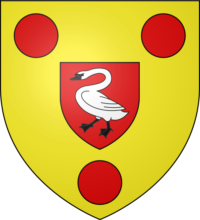Difference between revisions of "Boulogne-sur-Mer"
(→Ashen Crusaders) |
(→Clans Bas) |
||
| (2 intermediate revisions by the same user not shown) | |||
| Line 157: | Line 157: | ||
===Clans Bas=== | ===Clans Bas=== | ||
| − | : | + | :[[File:Malkavian Orderic.jpg|200px]] - [[Orderic]] -- ''The Mad Minstrel'' |
:[[File:Brujah Uda.jpg|200px]] - [[Uda]] -- ''The Red Woman'' | :[[File:Brujah Uda.jpg|200px]] - [[Uda]] -- ''The Red Woman'' | ||
| − | : | + | :[[File:Nosferatu Cyr.jpg|200px]] - [[Cyr]] -- 'The Wretch of Low Town'' |
---- | ---- | ||
<br> | <br> | ||
Latest revision as of 00:21, 12 January 2019
[[]]
Contents
Quote
Appearance
Climate
Boulogne-sur-Mer has chilly winters not far above freezing and cool summers tempered by its exposure to the sea. Considering its position, the climate is quite cold in relation to south and east coast locations in England year round. Precipitation is also higher than in said southern English locations.
Coat of Arms
Economy
- Fishing (primarily herring, both salted. smoked and preserved in brine)
- Smuggling (all sorts of contraband between England and France)
- Whaling (Whale oil and ivory fetch excellent prices throughout Europe)
Geography
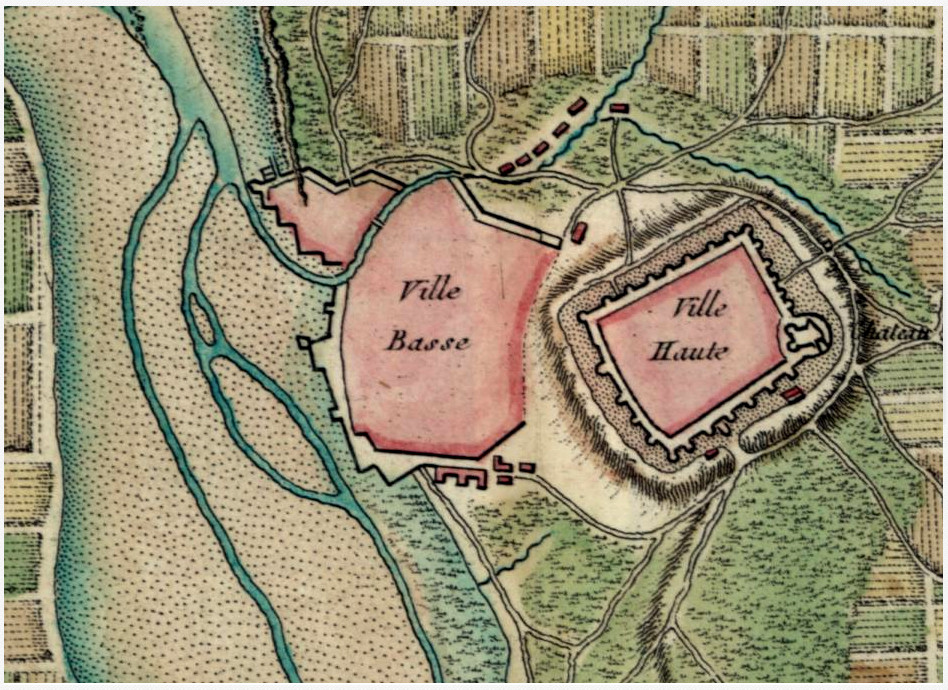
Boulogne-sur-Mer is in Northern France, at the edge of the English Channel and in the mouth of the river "Liane". As the crow flies, Boulogne is approximately at 19 miles from Calais, 31 miles from Folkestone - England, 62 miles from Lille and Amiens, 93 miles from Rouen and 134 miles from Paris.
Boulogne is a relatively important city of the North, exercising an influence on the "Boulonnais" territory (of numerous towns and villages which surround Boulogne). The coast consists of the capes Gris Nez and Blanc Nez (which are the closest points of France to England), and a lighthouse. The hinterland consists of slowly expanding farms surrounded by an ancient and extensive Old World forest.
Districts
Ville Haute (High Town)
The Fortified town / Old-town location of the castle, the basilica, the belfry, the count's palace, town hall and the courthouse. In addition to the these important buildings, the old town has some of the finer shops in town and hosts a active market place from sunrise to sunset except on Sunday.
Ville Basse (Lower Town)
- Beaurepaire (Beautiful hideout): A hidden den of smugglers and thieves situated to the north of the city.
- Bréquerecque: A small enclave established by Norman merchants and their servants situated in the south of the city.
- Capécure: An area of slaughterhouses, tanneries and brining-pools situated in the west of the town, around the harbor.
- Dernier Sou (Last penny): A squalid area of shanties and squater's huts situated in the east of the city.
- Saint-Pierre (Saint Peter): A centuries old, muddy neighborhood inhabited by fishermen and their families.
Forest of Desvres
History
Origin of the city
The foundation of the city known to the Romans as Gesoriacum is credited to the Celtic Boii. In the past, it was sometimes conflated with Caesar's Portus Itius, but that is now thought to have been a site near Calais which has since silted up. From the time of Claudius's invasion in AD 43, Gesoriacum formed the major port connecting the rest of the empire to Britain. It was the chief base of the Roman navy's Britannic fleet until the rebellion of its admiral Carausius in 286. As part of the imperial response, the junior emperor Constantius Chlorus successfully besieged it by land and sea in 293. The name of the settlement was changed to Bononia at some point between the sack of Gesoriacum and 310, possibly as a consequence of its re-founding or possibly by the replacement of the sacked and lower-lying city by another nearby community.
The city was an important town of the Morini, and Zosimus called it Germanorum ("Germanic-speaking") at the end of the 4th century.
Middle Ages
In the Middle Ages Boulogne was the capital of an eponymous county, founded in the mid-9th century. An important Count, Eustace II, assisted William the Conqueror in his conquest of England. His wife founded the city's Notre Dame cathedral, which became a site of pilgrimage from the 12th century onwards, attended by fourteen French kings and five of England. It was an important whaling center prior to 1121. The city survived on herring fishing and received its municipal charter from Count Renaud of Dammartin in 1203.
Current Events
Since the beginning of Spring, the town has been the gathering place of local and foreign forces having taken the Cross and intent on the liberation of Jerusalem from the Saracen dominion.
Population
- Town (2889) - Census of 1066 A.D.
- Foreign Crusaders (4000+) - Rough Estimate in 1096 A.D.
- Bolverk's Army (4906) - Census of May, 1096 A.D.
- Current Population: 11,795
Citizens of Boulogne-sur-Mer
- [[]] --
Cemeteries
Fortifications
- Medieval walls 1,500 metres long, with 4 gates and 17 towers.
- Medieval castle, whose foundations date to Roman times.
Holy Ground
Churches
- Church of St Nicholas (Gothic)
- Cathedral basilica of Notre-Dame, with a dome standing at over 100 m. The crypt is one of the largest in France, and has Roman, Romanesque and Gothic elements.
Convents
Inns
Law & Lawlessness
Monuments
Private Residences
Taverns
Boulogne-sur-Mer
Hauts Clans
The last resident members of the High Clans left Boulogne-sur-Mer for England in the train of William the Conqueror in 1066 A.D. Since that time the High Clans have had no influence to speak of in the port town until the arrival of the Ashen Crusaders and the Coterie.
Ashen Crusaders
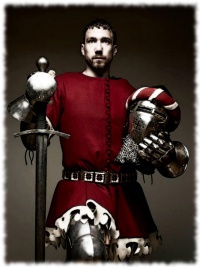 - Godwine of Caerhurst -- Duke of Amber
- Godwine of Caerhurst -- Duke of Amber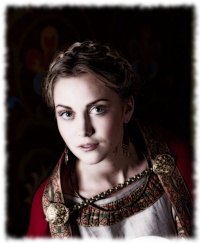 - Gethwine of Langworth -- Duchess of Amber
- Gethwine of Langworth -- Duchess of Amber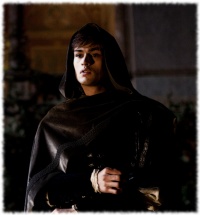 - Eadweard of Normandy -- Minstrel of London
- Eadweard of Normandy -- Minstrel of London
Clans Bas
Whore Houses
Websites
https://en.wikipedia.org/wiki/Boulogne-sur-Mer
https://en.wikipedia.org/wiki/Eustace_III,_Count_of_Boulogne (Crusader)
